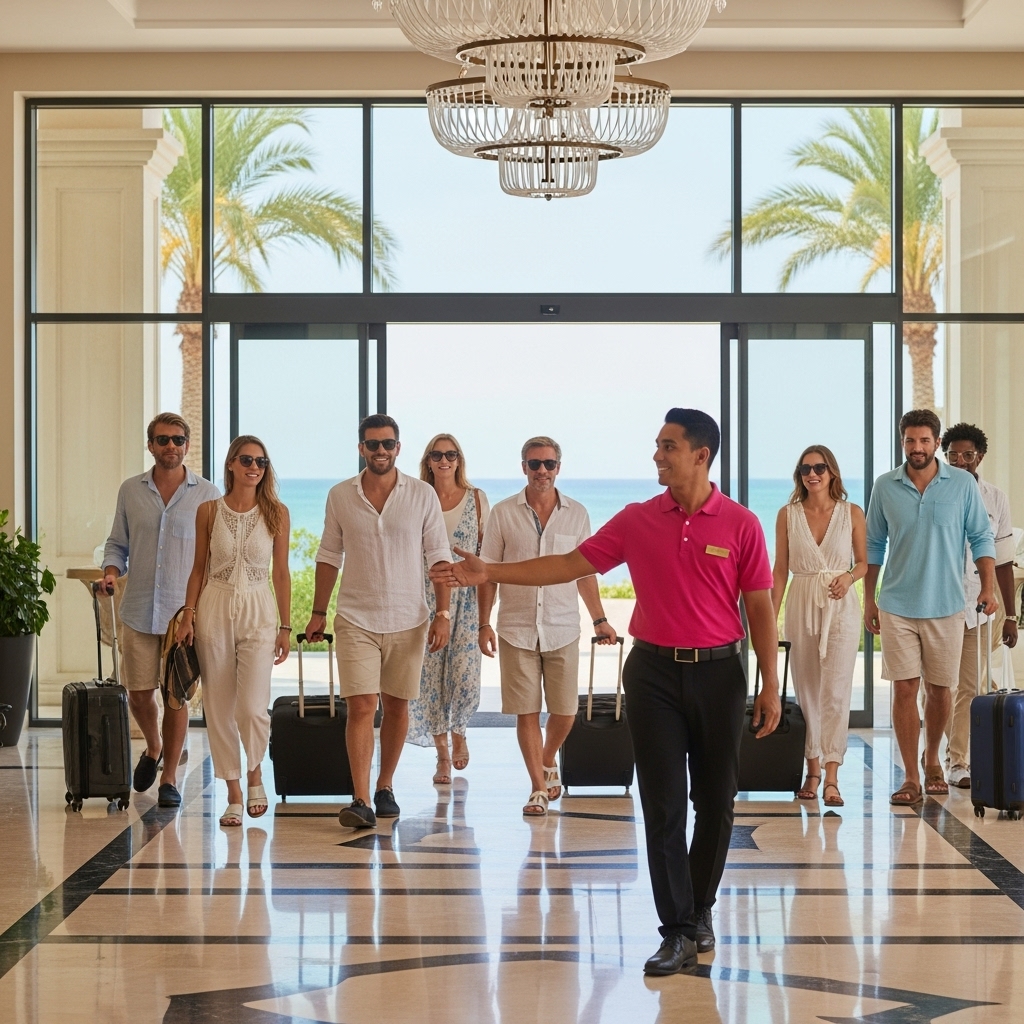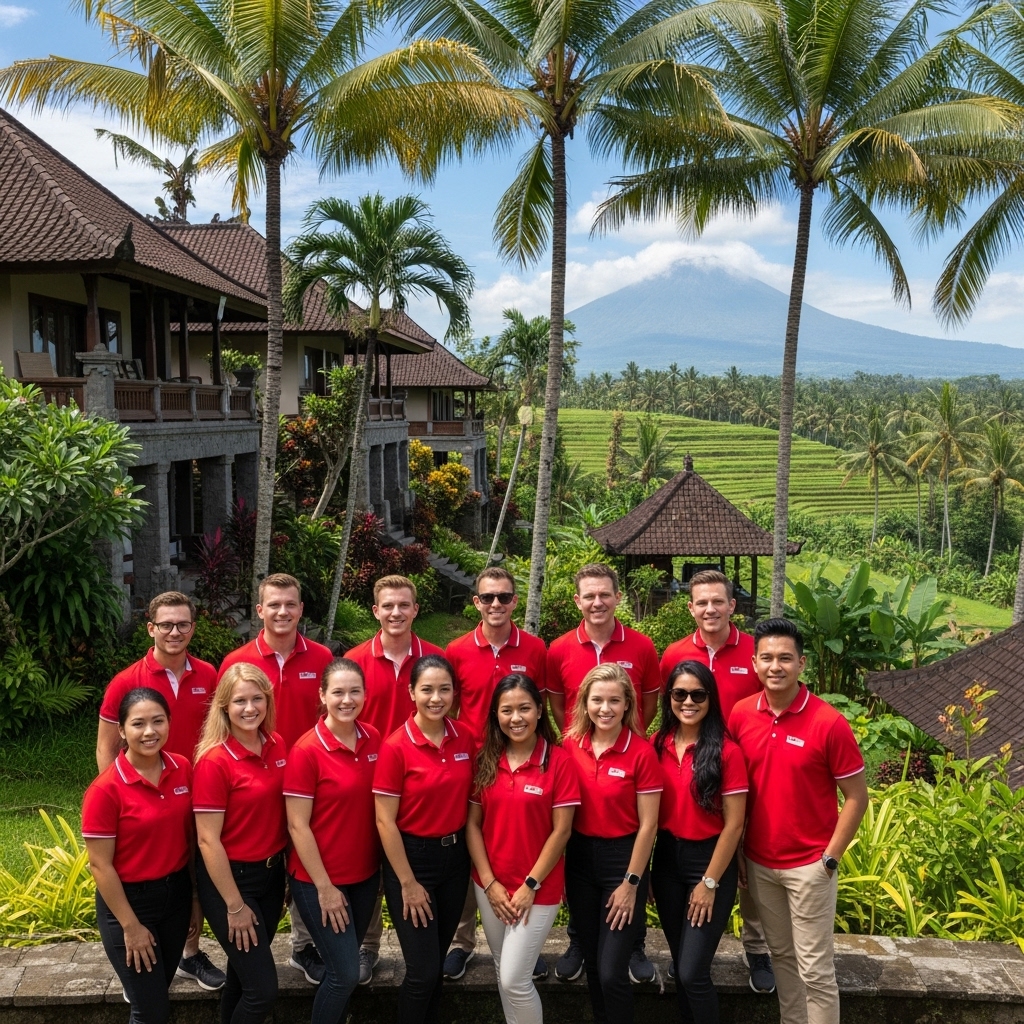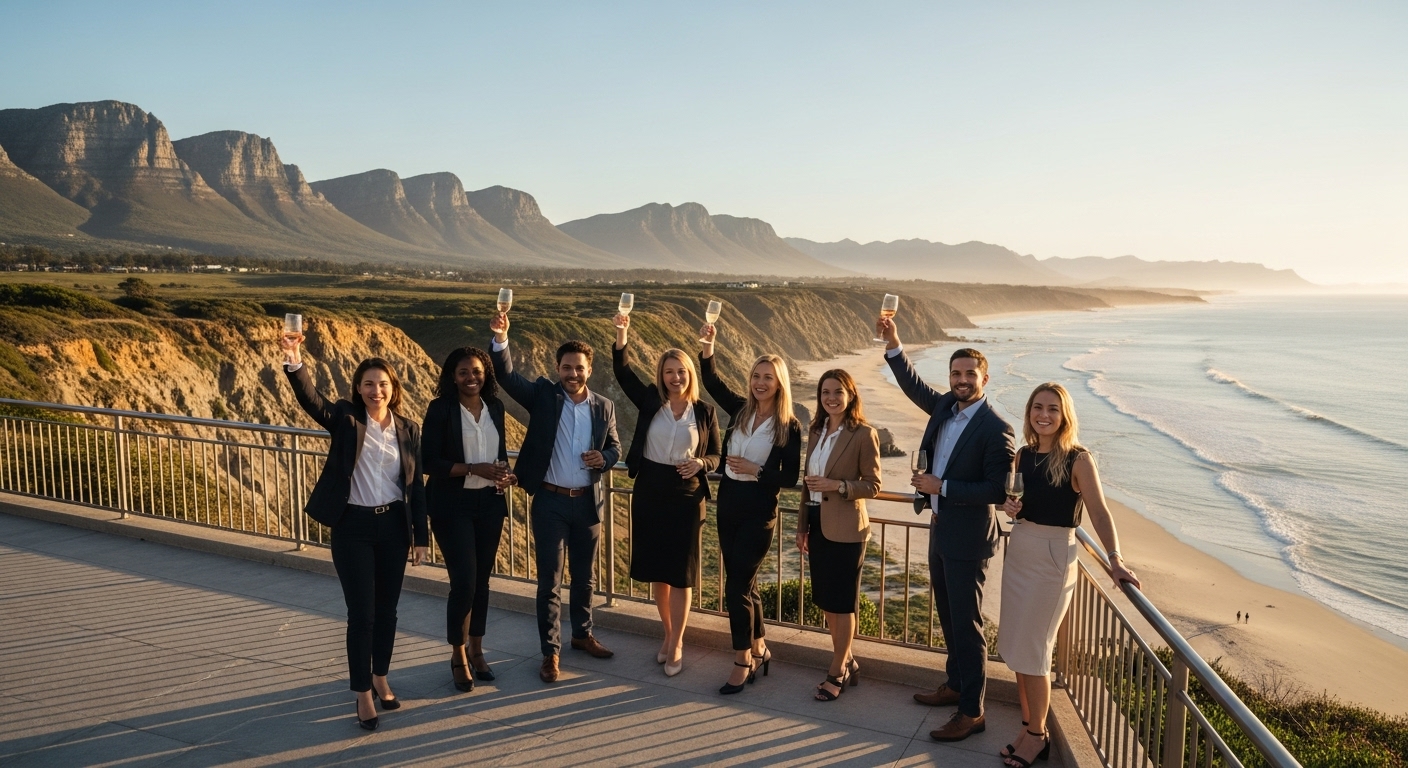
Incentive Trip Planning
Incentive trips for employees go beyond mere rewards—they inspire, energize, and build a culture of recognition. When done well, they can deepen loyalty, raise motivation, and deliver measurable returns. But success requires more than picking a destination and booking hotels.
This guide will walk you through the full process, from goal setting and budgeting to logistics, communication strategies, and post-trip follow-up. You’ll see examples, best practices, and how to work with a professional incentive travel agency that handles flights, hotel chain partnerships, internal marketing, guest coordination, and real-time communication.
1. Define Your Goals & Eligibility Criteria
1.1 Clarify Your Purpose
Decide what this trip is meant to do. Common goals include:
- Reward top performers (e.g. sales, customer success)
- Improve retention in critical roles
- Build cross-team relationships
- Signal that excellence is rewarded
For example: a software company might stipulate only sales reps who increase net new revenue by 20% and maintain >90% retention of existing clients qualify.
1.2 Set Measurable Criteria & Timeframes
- Pick quantifiable KPIs (revenue, margins, new accounts, CSAT)
- Choose an eligibility window (quarterly, annual, 12–18 months)
- Add guardrails (e.g. no repeat winners two years in a row)
- Publish rules, thresholds, and tie them to business outcomes
1.3 Connect Goals to Business Impact
Build a business case: estimate how much incremental revenue or cost savings the program must drive to justify the trip. Use benchmarks—properly designed incentive trips have been shown to deliver ~112% ROI.
2. Build a Realistic Budget (Including Flights & Hidden Costs)
2.1 Core Cost Components
Your budget should include:
- Airfare & airport transfers
- Hotel accommodations
- Meals, in‑country transport
- Activities, gala events, excursions
- Branding materials, awards, gifts
- Agency fees, project management
2.2 Factor in Hidden & Contingency Costs
These often surprise planners:
- Travel insurance, medical coverage
- Visa fees, vaccinations
- Currency fluctuations or local taxes
- Extra nights (for delays)
- Backup activities or alternate venues
- On-site support staff
A 10–15% buffer is prudent.
2.3 Airfare Strategy
Given that flights often consume 30–40% of total cost:
- Use an IATA-certified agency to issue global airline tickets and manage group airfare.
- Leverage agency access to group rates, interline ticketing, seat blocks, and flight manifests.
- Book flights 90–120 days in advance to lock favorable rates.
- Account for special requests (e.g. meal preferences, seat upgrades) and coordinate +1s.
Agencies with air credentials reduce risk, simplify ticketing, and help with rebookings in emergencies.

3. Select Destination & Timing Smartly
3.1 Destination Criteria
Evaluate:
- Flight access, visa requirements, ease of arrival
- Infrastructure, safety, and service quality
- Cultural richness, memorable experiences
- Proximity to hotel chains (Hilton, Marriott, Hyatt) to ensure broad brand coverage
3.2 Timing & Season
- Choose off-peak / shoulder periods for cost advantage
- Avoid holiday or extreme weather windows
- Synchronize trip dates with your company’s calendar (post‑fiscal year, quarter-end, etc.)
3.3 Example Destinations
In 2025, destinations like Costa Rica, Portugal, Thailand, or the Canary Islands are trending for incentive travel due to accessibility, culture, and cost balance.
4. Design the Program & Itinerary
4.1 Plan Balanced Days
A 5-day sample itinerary:
- Day 1: Arrival, welcome reception
- Day 2: Cultural immersion or city tour
- Day 3: Team challenge + free time
- Day 4: Awards gala + surprise element
- Day 5: Debrief breakfast + departures
4.2 Offer Tracks or Options
Let participants choose from parallel tracks:
- Adventure (hiking, zipline, water sports)
- Leisure/Wellness (spa, beach, yoga)
- Cultural (local crafts, cooking, museum)
4.3 Personalization & “Wow” Moments
Include:
- Upgraded rooms for top winners
- Surprise events (flash concerts, private dinners)
- Customized gifts or local artisan keepsakes
4.4 Downtime & Sustainability
- Give unstructured time for rest, reflection, optional exploration
- Embed sustainable practices: carbon offsets, local sourcing, community visits
5. Partner with a Top Incentive Travel Agency
5.1 Prioritize IATA & Hotel Brand Integrations
Select an agency that:
- Is IATA-certified, so flight ticketing is handled professionally
- Holds preferred agreements with major hotel chains (Hilton, Marriott, Hyatt, IHG)
- Access to group rates, rooming list support, complimentary space or upgrades
- The hotel chains’ global reach ensures presence in many destinations
Preferred hotels are trained to host large groups, know corporate protocols, and deliver consistency.

5.2 Evaluate Agency Capabilities
Essential criteria:
- Transparent pricing and contract terms
- Local destination management network
- Strong reputation and references
- Capacity for marketing outreach, attendee communication, risk management
5.3 Why Partnerships Matter
An agency with hotel chain ties can:
- Secure favorable food & beverage minimums
- Provide VIP check-ins, room upgrades, and free space
- Integrate loyalty programs (Hilton Honors, Marriott Bonvoy) to delight participants
Example: A financial firm’s 80-member incentive group stayed at a Hilton property in Bali. Because of the agency’s preferred status, the firm received free gala ballroom time, extra welcome cocktails, and room upgrades.
6. Marketing & Internal Communication Strategy
6.1 Multi-Channel Pre-Launch Campaign
Your agency should deliver or support:
- Email blasts and drip campaigns
- Invitations and reminders via WhatsApp, Slack, Teams
- Teaser visuals, landing pages, FAQs, countdown banners
- Internal webinars or info sessions
6.2 Companion / +1 Management
If guests are permitted:
- Collect traveler information (passport, meal, preferences) in advance
- Clarify what is included vs optional (meals, transport)
- Ensure the agency can also accommodate +1s seamlessly
6.3 Confirm Flights & Details
- Send flight confirmation, check-in reminders, and manifest details
- Coordinate seat assignments, baggage, transfer logistics
- Provide personalized itineraries per attendee (with +1s included)
7. Logistics & Execution
7.1 Flight & Travel Coordination
Let the IATA-certified agency:
- Handle ticket issuance, flight changes, rebookings
- Maintain a complete manifest with names, passport data, contact numbers
- Provide 24/7 support desk for travel issues
7.2 Hotel & Venue Logistics
- Confirm room blocks and rooming lists
- Negotiate contract protections (attrition, cancellation, force majeure)
- Arrange local vendors for transport, event decor, AV, catering
7.3 Contingency Plans & Safety
- Backup venues and activities for weather or emergencies
- Travel insurance and medical support
- Emergency escalation paths and local contacts
8. Onsite Management & Communication
8.1 Onsite Support & Coordination
Have the agency:
- Operate a welcome desk / registration
- Deploy staff for transportation, coordination, emergencies
- Manage check-in, signage, and orientation
8.2 Real-Time Communication
- Use an event app (with schedule updates, push alerts, maps, chat)
- Maintain a WhatsApp (or equivalent) group for urgent or last-minute info
- Send reminders, updates, changes through app notifications or SMS
8.3 Recognition & Ceremony
- Host a polished awards gala with branding, speeches, photo moments
- Acknowledge +1s gracefully
- Incorporate surprise elements or guest entertainment
9. Post-Trip Follow-Up & Measuring Impact
9.1 Feedback Collection
- Send surveys immediately post-trip for attendee impressions, what worked, what didn’t
- Gather net promoter score (NPS) and open‑ended comments
9.2 Performance Metrics & ROI
Track:
- Sales uplift (versus baseline)
- Retention or reduced turnover in incentive group
- Engagement metrics (surveys, referrals, internal sentiment)
Because non-cash incentives like travel often yield higher behavioral lift than cash rewards, ROI can be significant.

9.3 Internal Reporting & Storytelling
- Present results and stories to leadership
- Share photo galleries, social media posts, winner testimonials
- Reinforce culture, recognition, and encourage next cycle
9.4 Continuous Improvement
- Review what itineraries, destinations, or communications need optimization
- Incorporate attendee feedback to update eligibility, structure, and logistics
10. Innovation & Trends to Watch
- Personalization & micro‑experiences: tailor optional tracks per interest
- Wellness & sustainability: include green practices and self-care elements
- Hybrid incentive models: combine physical travel with virtual incentives
- Closer, fresh destinations: many participants now prefer destinations closer to home or lesser-known places
- Dynamic communication tech: more agencies are using AI and event apps for live updates
FAQs
Q: Are incentive trips tax-deductible?
A: Often, yes—when tied to business objectives and properly documented. Consult your tax advisor.
Q: What’s a good duration?
A: Typically 3–5 nights strikes a balance between impact and cost.
Q: How do you manage resentment from non-winners?
A: Transparently communicate criteria, reward efforts at multiple tiers, and use interim recognitions.
Q: How much budget per person?
A: Depends on location and quality—benchmark corporate incentive trips often land between $4,000 and $10,000+ per person.
Q: Can remote or hybrid teams participate?
A: Yes. You can combine virtual rewards or livestream gala events to include distributed employees.






